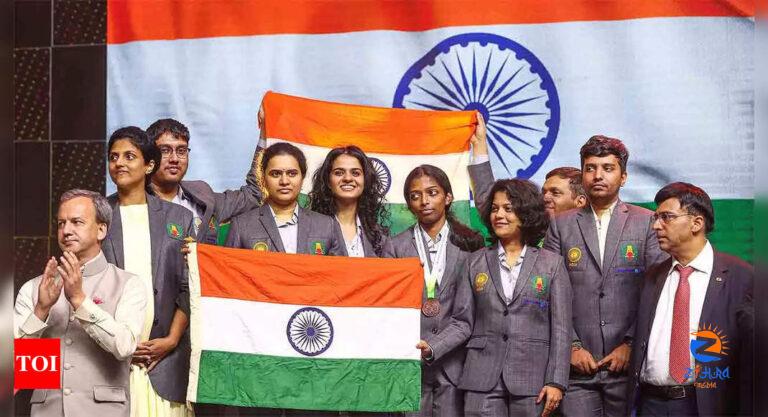
[ad_1]
With a bronze medal in each section, the Chess Olympiad for first-time hosts India was a success. But even the medals warrant some stock-taking and post mortem.
In a somewhat justified euphoria following the big festival, Indian chess would do well in processing the underlying messages. Hosting the Olympiad is not particularly in demand due to the costs involved.
The USA and China have won gold medals without ever hosting the event. And when India play in Budapest 2024, they will have just one team in each section and won’t have a cushion of three.
More than Rs 90 crore was committed by the Tamil Nadu government for the biennial extravaganza. On the other hand, India still can’t don’t have an elite classical round-robin event or a strong GM norm tournament for home-grown players in the regular chess calendar. Accepting a higher number of entries for more corpus through entry fees, playing two or more rounds in a day to save an extra day’s rent for the playing hall, absence of playing tiebreak, lack of dynamic tournament format and huge base of lower rated players (below Elo 2200) are realities that Indian chess is grappling with.

The performance of the youngsters (India 2) ahead of the elite players and the meltdown of the women’s team are potential eye-openers. Praveen Thipsay, former seven-time National champion and head of the delegation at the Olympiad, felt that the players from men’s B team were more battle-ready.
“We can’t have a fixed formula of selection. Some players could be very strong in Elo rating. But that doesn’t mean they are ready for Swiss League team events which pose different challenges,” said Thipsay.
“I feel out of five players, only three should be on the rating strength and the remaining two should be picked on form, ability to adapt and score in pressure situations of the Swiss League team event. Players who maintain their rating strength by playing largely closed tournaments may or may not have that.”
There is also a big worry of a qualitative gap between men and women players. Compared to 73 men’s GMs, India have only two women GMs (K Humpy and D Harika). Humpy said: “It’s creditable that Harika played despite her (pregnancy) condition. But we have to find more women players in the system. ” Thipsay also advocated dedicated tournaments for women only (both open tournaments and closed WGM events). But will women-only events help the girls take the next step forward? That’s a question that needs to be asked.
Former Olympiad player Muranalini Kunte said: “As a former player, I would like a strict rule of both boys and girls playing together in one section only. But it will have its problems… When I was playing, if there were 200-300 decent men players in India, there were only 50 girls. Had we forced these girls to play in the open section then, many would have dropped out. So, there are no clear-cut answers.”
GM Tejas Bakre, the Indian C captain at the Olympiad, said: “The ‘Chess in Schools’ programme needs to cover a larger area and variety of schoolchildren from varied financial backgrounds to strengthen chess culture and unearth talent with coaching camps. Free GM coaching for the talented players should be considered since the costs are beyond the reach of the common man.”
More and more Indian players breaking the Elo 2700 barrier is a good sign (India currently have five in the elite club). But unlike other professional sports – where the year’s calendar is announced well in advance and points offered are also announced so that everyone can plan – it is totally absent in chess.
New FIDE deputy president V Anand has talked about “more inclusivity” as one of his goals. If the words are translated into deeds, the major lacuna in the cerebral game – lack of a level-playing field – can be minimised.
[ad_2]